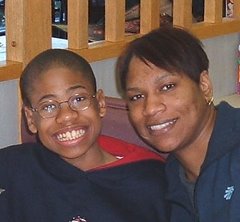By Rendueles Villalba, M.D., and Colin Harrington, M.D.
Psychiatric Times February 2003 Vol. XX Issue 2
Self-injurious behavior (SIB) is intentional self-directed tissue injury inflicted without conscious intent to kill oneself (Simeon et al., 1992). A provisional nosology, based on the clinical phenomenology of self-injurious behavior, has been developed (Table 1) (Villalba and Harrington, 2000). However, this typology awaits etiological grounding. While a variety of neurotransmitter systems may be involved in the initiation and maintenance of repetitive self-injurious behavior (rSIB), most clinical studies to date have attended to the role of serotonin or endogenous opioids. This focus has emerged from a conceptualization of rSIB as a problem of impulse control (primarily mediated by serotonin) and/or as a maladaptive pain-related behavior (ultimately mediated by opioids) (Villalba and Harrington, 2000). Clinically significant forms of self-mutilation occur predominantly in mental retardation, pervasive developmental disorders, major psychotic disorders and cluster B personality disorders (Simeon et al., 1992). Psychodynamic formulations have suggested that self-inflicted injury may promote affect regulation, relieve anxiety, terminate dissociative experiences, discharge sexual arousal, support (dysfunctional) interpersonal relationships, generate euphoria, serve as self-punishment, establish ego/self boundaries and/or serve as a nonlethal alternative to suicide (Haines et al., 1995; Herpertz et al., 1997; Suyemoto, 1998). In this review, we address biological aspects of rSIB.
Full article at: http://www.psychiatrictimes.com/showArticle.jhtml?articleID=175802309
For information, resources and practical strategies on autism visit:
www.autismconcepts.com
www.child-autism-parent.cafe.com
Forget what you haven't heard… Family site shares news, resources, announcements and free or low-cost ways to help us manage day-to-day living with autism.
Crystal Brown

About Me

- Crystal
- AutismConcepts.com and Child-Autism-Parent-Cafe.com share a large collection of useful autism information, resources, and how-to articles written by authors who are touched by autism, offering practical solutions to families. Particularly minority and underserved families and caregivers who may not know what to do or where to go for help.
MJ And Me

Blog Archive
-
▼
2006
(213)
-
▼
April
(20)
- Study: Autism Has High Costs to U.S. Society
- Tutorial, Access To Care For People With Disabilities
- Autism - Worst Welfare Disaster In History
- Treatment involves repeated exercises
- Guardianship News
- Face Reader Bridges Autism Gap
- 20 Parent Tips To A Tantrum-Free Haircut For A Chi...
- Repetitive Self-Injurious Behavior: The Emerging P...
- GRACE (VA) Co-Sponsors Free Program for Autism Awa...
- Help for Siblings of Children with Special Needs
- Brain Scans Help Explain Autistic Traits
- Parents of Autistic Kids March Against Mercury
- Study Denouncing Autism Epidemic Misses the Mark; ...
- Increase Autism Awareness with Build A Bear Workshop
- Siblings of Disabled Have Their Own Troubles
- The Age of Autism: Mercury Ban Opposed
- Insurance and autism
- The Age of Autism: Hot potato on the Hill
- Wrightslaw Special Education Law and Advocacy Trai...
- The alienating 'hello'
-
▼
April
(20)